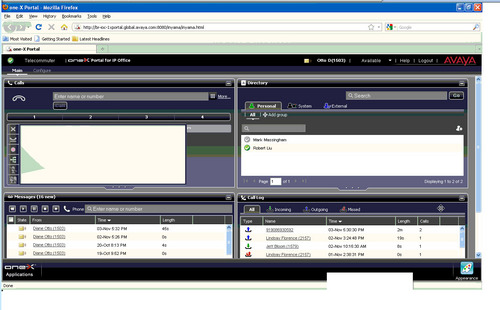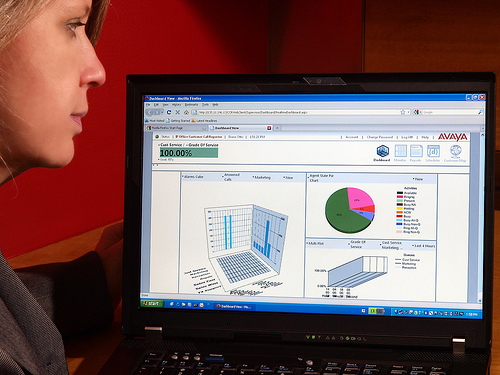At 4Tbps per half rack, Juniper claims new T4000 is 2X Cisco's CRS-3
By Jim Duffy, Network World
November 15, 2010 12:07 AM ET

Juniper Networks this week will take its turn claiming innovation leadership in Internet core routing by unveiling its next-generation platform.
Cisco, Juniper play years of leapfrog in the Internet core
The Juniper T4000 boasts an industry leading 240Gbps per slot capacity, good for 4Tbps per half-rack chassis – a device optimized to handle booming video and other traffic on service provider networks.
The new router is based on the 250Gbps per slot ASICs Juniper unveiled in February, right when Cisco announced its latest generation, "forever changing the Internet" CRS-3 core router.
Juniper's T4000 is the company's attempt to marginalize those claims. But then, Cisco will be back eventually to stake another temporary technological leadership claim in core routing, and the process will repeat itself. Indeed, Juniper and Cisco have been playing leapfrog in Internet core routing advances since 1998.
At 8Tbps per rack, Juniper claims the T4000 has double the port density of Cisco and other competing platforms. The router features over 2 billion packet/sec of forwarding performance, and can support 192 10G Ethernet, 16 100G Ethernet and 48 40G Ethernet wire-speed ports per system.
By contrast, Cisco's 16-slot CRS-3 is a full rack system with 4.48Tbps switching capacity and 140G per slot.
Also, Brocade just unveiled a 32-port 100G wire-speed Ethernet router that features a 15.36Tbps backplane and 480Gbps half-slot capacity, and forwarding performance of 4.8 billion packet/sec for IPv6. But Brocade has yet to make much of a dent in the worldwide core router market, where market watcher Dell'oro finds Cisco, Juniper and Huawei accounting for 97% of total.)
Cisco says the T4000 is a response to its CRS-3, which has 30 customers and $50 million in revenue booked.
"It's their response to us," says Mike Capuano, Cisco's director of service provider marketing. "They already announced the 250Gbps chipset. The CRS-3 is current shipping (whereas the T4000 won't ship until the second half of 2011). They wanted to get the news out early to slow that (CRS-3 momentum) down."
Slow is a word not to be associated with the T4000 or the T series as a whole, according to Juniper. Overall, the new router can support up to 384 oversubscribed 10G Ethernet ports per system; and Verizon and Internet2 have already deployed Juniper's 100G Ethernet interfaces on the T series routers. (Watch Evolution of the router.)
Video driving router capacity race
Driving the need for such capacity and performance, especially at 100G, is video. Two-thirds of consumer traffic on networks will soon include some form of video, Juniper says. Cisco says that 90% of Internet traffic will be video by 2014.
Using 100G, a 90-minute HDTV movie can be transmitted in one second, Juniper says. The technology also enables intelligent processing of video flows, fast channel change and retransmission to improve quality, the company says.
Internet2 is using 100G to accelerate the processing of terabytes of data for scientific research. In one such project, 100G will be used to transfer data between the twin telescopes of the Gemini Observatory in Hawaii and the Chilean Andes, allowing astronomers in both hemispheres to share data simultaneously.
Juniper Networks this week will take its turn claiming innovation leadership in Internet core routing by unveiling its next-generation platform.
Cisco, Juniper play years of leapfrog in the Internet core
The Juniper T4000 boasts an industry leading 240Gbps per slot capacity, good for 4Tbps per half-rack chassis – a device optimized to handle booming video and other traffic on service provider networks.
To continue reading, register here and become an Insider. You'll get free access to premium content from CIO, Computerworld, CSO, InfoWorld, and Network World. See more Insider content or sign in.
Page 2 of 2
But Tom Nolle, president of consultancy CIMI Corp., believes the T4000 is better positioned for metropolitan network applications than core. He says the router's footprint, density, and power and cooling requirements are suited for intra-metro routing where traffic originates and terminates in the same metro.
"This is a strong product for mobile broadband," Nolle says, where it can route closer to the subscriber and reduce backhaul requirements. "But I don't think they really positioned this for the 'metro Internet.'"
Indeed, core seems to be the target for the T4000. In the future, Juniper says it will upgrade its TX Matrix Plus router interconnect to be able to cluster four T4000s into a 16Tbps system, and also to cluster a mix of T4000s with the current generation core T1600 routers. The T1600 and previous generation T640 routers can be upgraded to the T4000 without service interruption, Juniper says.
Juniper says it has more than 6,000 T series systems deployed including over 1,100 T1600s. Two hundred and seventy-five of them are in multichassis clusters, including 50 in a TX Matrix Plus and 225 linked through the previous generation TX Matrix interconnect.
Juniper will demonstrate the new system at this week's Supercomputing 2010 show. There, the company will demonstrate 100G Ethernet edge-to-core routing capabilities between the T4000 and the Juniper MX240 edge router. Ixia testers will pump Ethernet packets into both the T4000 and MX240 at 100G, while the T4000 and MX240 will swap packets back and forth over 10 aggregated 10G Ethernet links.
The aggregated 10G links are intended to show how service providers running 10G at the edge to the core can achieve 100G performance, Juniper officials said.
The T4000 will be available in the second half of 2011. Juniper did not disclose per port or system pricing.



 After all the names--"Wave 14", "Communications Server 14," "Office Communications Server," what is Microsoft Lync, the company's third-generation UC platform--and what does it do?
After all the names--"Wave 14", "Communications Server 14," "Office Communications Server," what is Microsoft Lync, the company's third-generation UC platform--and what does it do? 

















